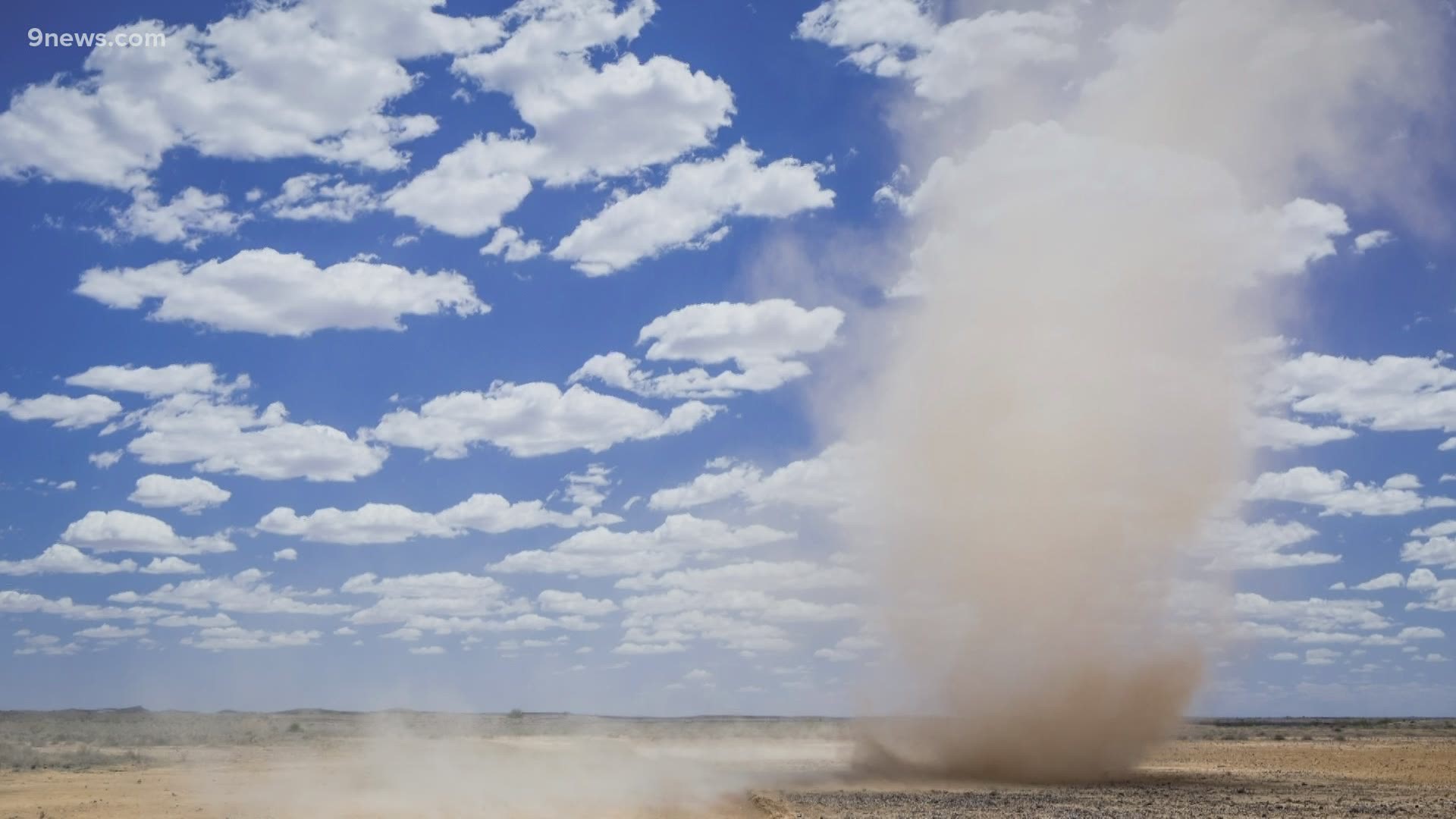TIMNATH, Colo. — The record heat that swept across Colorado over the weekend was the main ingredient in the formation of several dust devils.
One well-defined dust devil was spotted near Timnath on Saturday
A dust devil is a spinning column of rising air similar to a tornado. The only difference is that a tornado would be attached to a cloud.
Dust devils are also smaller and weaker than tornadoes. The one in Weld County appeared to be less than 20 yards wide with winds of only about 45 mph or less.
Dust devils happen when the air near the ground heats up. That causes the air to rise and spin. A dust devil can sustain itself as long as it keeps moving over more warm air. They usually last less than 5 minutes, but bigger ones can last for 10 minutes or longer.
Another stout and long-lasting dust devil was spotted Saturday in the San Luis Valley near the Great Sand Dunes National Park and Preserve.
It’s not just warm air that’s needed to form dust devils, but the ground itself has to absorb high amounts of direct sunlight. That’s why you usually see them on hot days with lots of clear blue skies. You’re less likely to see them when there is some cloud cover even if the air temperature is warm.
Instability helps, too. One of the keys to getting the column to spin is for the air to rise very quickly. If there is some cold air not too far above the heated surface, the air will rise quickly.
Once the air cools, it sinks nearby and you end up with an updraft and a downdraft in close proximity. That helps sustain the circulation.
And the type of surface also makes a big difference. Dust devils usually form in flat fields or lots because any objects or inclines can disrupt them.
Dust devils also need dust.
If it doesn’t suck up some dirt, a dust devil would remain invisible to the human eye because they don’t have cloud condensation like some tornadoes.
SUGGESTED VIDEOS: Science is Cool

